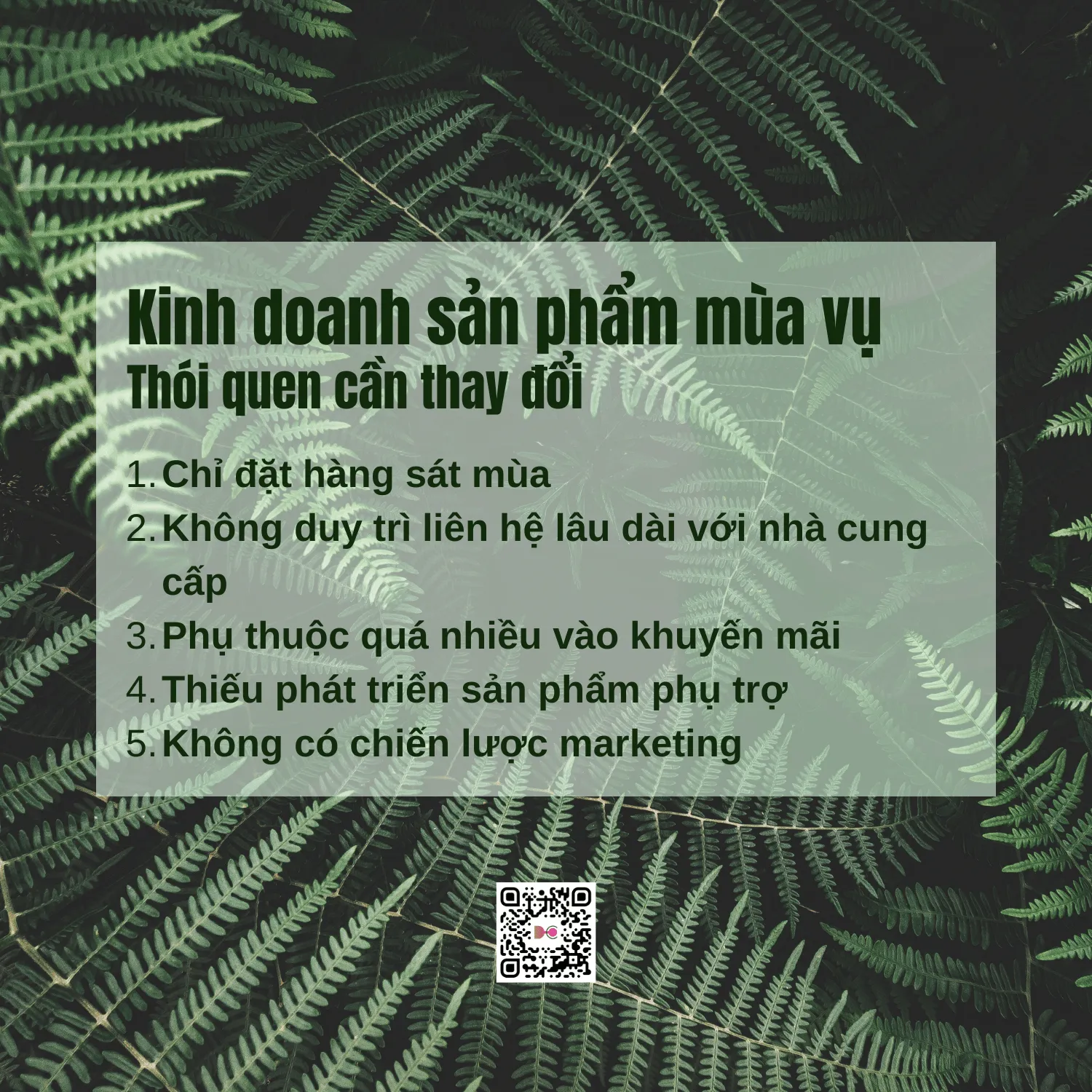Businesses selling seasonal products such as moon cakes, Tet gifts, seasonal specialty foods, etc. always face many challenges in selecting, importing goods and retaining customers. The general situation is “bustling in season, hibernating out of season”, making it difficult to create sustainable development.
So what problems do businesses buying seasonal products often encounter? What habits are preventing them from growing? And what is the solution to the problem of stable development all year round? The following article will clarify.
Biggest problem: difficult to predict and control inventory
One of the biggest challenges for businesses that buy seasonal goods is to predict customer demand and control inventory. Due to the seasonal nature of products, they are only consumed strongly in a short period of time, but to prepare enough goods, businesses must place orders with suppliers many months in advance, sometimes up to 3-4 months before the peak season.
If the forecast is not accurate, businesses can easily encounter the situation of:
- Large inventory: Unsold goods must be stored for a long time, leading to loss of capital and even loss of product value (especially fresh food and confectionery).
- Shortage of goods: Ordering too little, not enough to meet seasonal demand, customers switch to buying other brands.
- High storage and transportation costs: Directly affects profits.
Many businesses only focus on “fighting” in the season without a backup plan, causing slow capital turnover and difficulty in expanding business.
Late orders and unstable delivery
The season is often a time when the market is very active, many businesses compete to buy products and raw materials from suppliers. Therefore, it is common for orders to be delivered late or not as promised. This causes:
- Disruption of distribution channels, affecting sales plans.
- Affecting the reputation of purchasing businesses.
- Increasing costs due to having to find alternative sources of goods urgently.
Lack of innovation and product diversity
Another weakness of many seasonal purchasing businesses is that they do not proactively innovate their products or choose suppliers with diverse and innovative products. Many products are imported over many years with almost no change in design, quality or customer approach. This leads to:
- Customers get bored easily, making it difficult to differentiate themselves in the market.
- Businesses find it difficult to increase brand value and profit margins.
- Having difficulty competing with strong brands that constantly innovate products.
Lack of end-customer retention and post-seasonal care strategies
Many businesses that buy seasonal products focus on selling during peak periods, but fail to develop a long-term customer care strategy. The consequences are:
- Customers buy once and then… forget, there is no connection to buy again.
- Competitors can easily “steal” customers by creating new programs and innovating products.
- Businesses do not take full advantage of the potential for sustainable brand development.
Concentrate spending and capital at one time
With seasonal products, businesses must concentrate large amounts of capital in a short period of time to import goods and prepare for sale. This makes financial management difficult, leaving little capital for other activities during the year, affecting overall development.

Common habits need to change to develop
Only order close to the season, do not prepare in advance
Many businesses have the habit of ordering close to the season to “anticipate” demand, leading to high import prices, limited choices, and the risk of shortages. Instead, businesses should plan at least 3-4 months before the season to negotiate better prices, choose diverse designs, and prepare appropriate marketing.
Not maintaining long-term relationships with suppliers
Maintaining a stable relationship with suppliers makes it easier for businesses to get priority delivery, price and technical support. This is a vital factor for seasonal industries.
Relying too much on promotions
Promotions are effective tools, but if they are relied on only to stimulate demand, they will reduce profit margins and affect brand recognition. It is necessary to build other values such as product quality, customer experience, and brand story to increase long-term appeal.
Lack of ancillary product development
In addition to the main product, businesses should think about additional products or services to maintain revenue year-round such as gift combos, themed products, customer care services or pre-order programs.
No long-term marketing and customer care strategy
Marketing needs to be long-term and maintained year-round, not just focused on the season. Activities such as sending care emails, creating customer loyalty clubs, and surveys all help increase engagement and create momentum for the next season.

Conclusion
Seasonal product business has never been easy. But if the purchasing business only focuses on “selling well in the season” without a long-term plan, it will be difficult to develop sustainably. Accurately forecasting demand, managing inventory, maintaining relationships with suppliers, innovating products and taking care of customers all year round are the key factors that help businesses break through.
The habit of “after a hard season, let’s take a break…” needs to be replaced with a clear strategy and persistently maintaining continuous operations. Only then can businesses truly take advantage of the power of the seasonal market, while building a sustainable brand that grows stronger every year.












